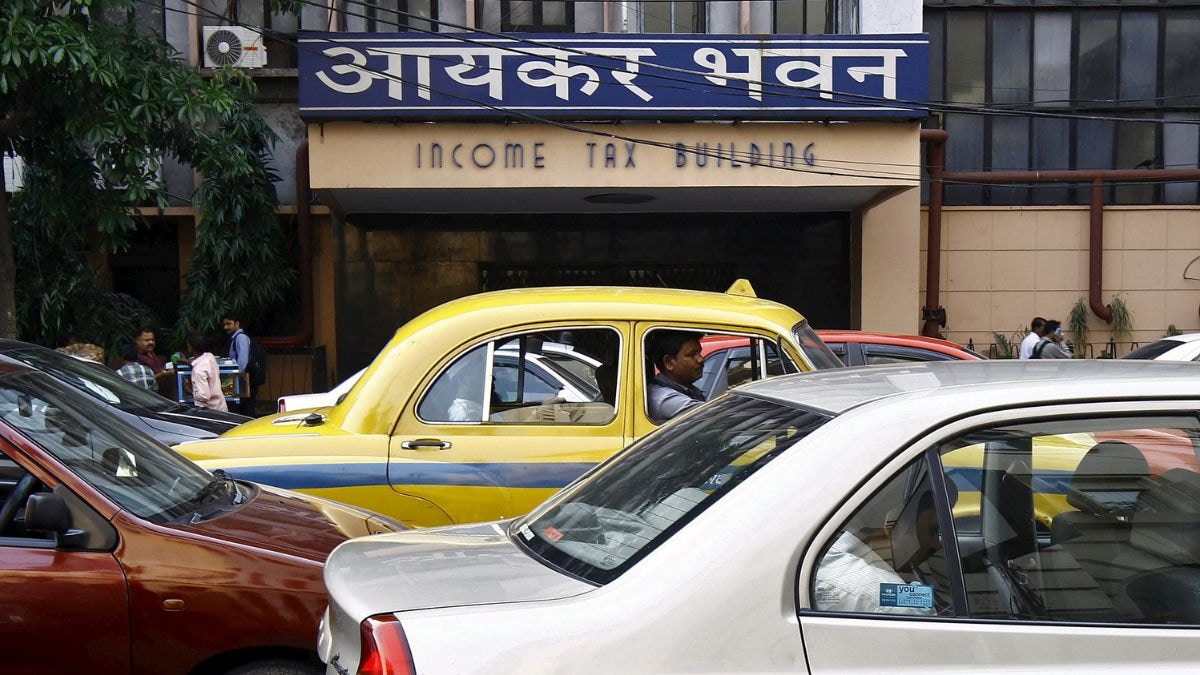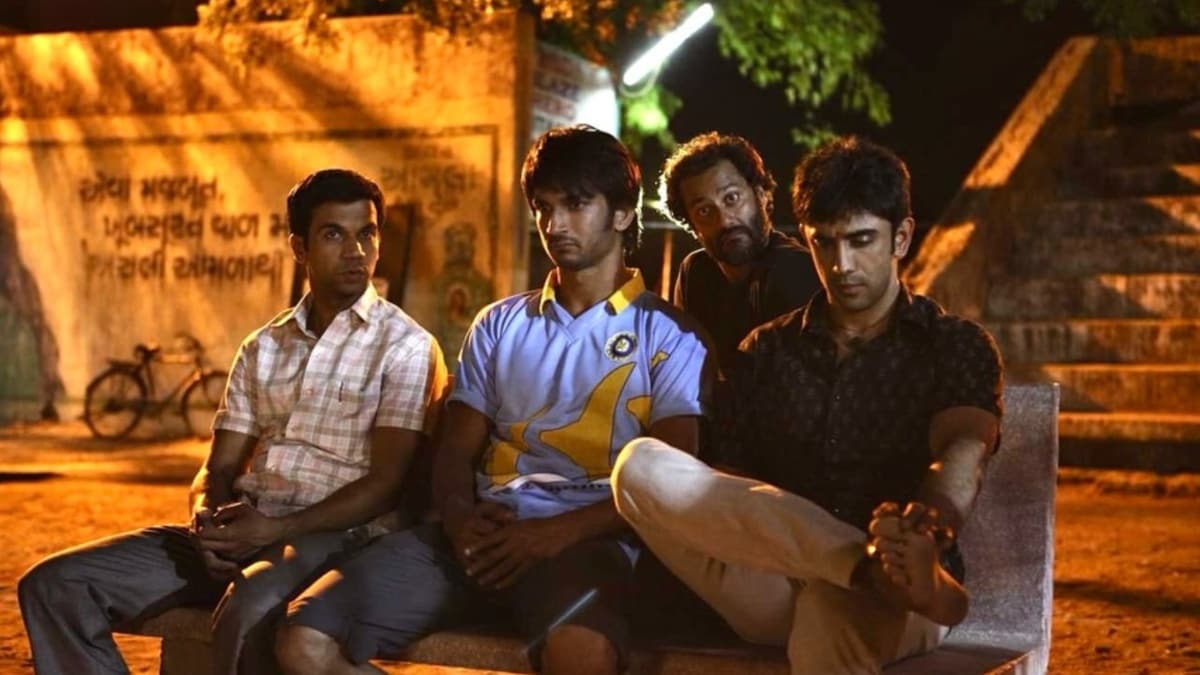Chefs Are Getting Creative With Himalayan Cuisine


Restaurants across India, Nepal, and Bhutan are taking inspiration from mountain communities, where foraging, preservation, and centuries-old culinary traditions provide great meals in challenging conditions
It’s a balmy afternoon in Darwa, a small village in the foothills of the Himalayas, in the Indian state of Himachal Pradesh. My husband and I have traveled over 1,000 miles from our home in Mumbai for a single meal: a 14-course tasting menu at India’s hottest dining destination, Naar. Helmed by chef Prateek Sadhu, the restaurant team periodically scours the nearby pine forests and river beds for wild fruits, berries, and herbs. Through quirky small plates of prickly pear sorbets, trout ceviche, cactus tart, and dehydrated winter carrots, Naar showcases the seasonal bounty of the mountains and the interwoven culinary cultures that exist there. I’m particularly excited to try sunderkala, a type of hand-rolled millet noodles, today a breakfast staple in the Indian state of Uttarakhand; Sadhu crouches by our table, telling us how they were likely brought to India from Tibet, before serving them with a silken broth and Ladakhi gyuma (blood sausages).
When Sadhu launched the intimate 16-seater in late 2023, it was an ambitious gambit. A Culinary Institute of America alumnus, with stints at Alinea, the French Laundry, and Noma, he quickly led the restaurant to Time’s 100 greatest places to visit in 2024 and Conde Nast Traveler’s best new restaurants list, immersing diners in Himalayan cuisines from Ladakh and Kashmir Valley in the north to Sikkim and Arunachal Pradesh in the east.
“My job is to tell those stories,” says Sadhu, who is originally from Jammu and Kashmir. But, he adds, “I don’t want to put rustic food on the plate. I want to play around with the nuances, and make it cool and relevant to the times we live in.”
/cdn.vox-cdn.com/uploads/chorus_asset/file/25872836/IMG_5667.jpg) Naar
Naar
/cdn.vox-cdn.com/uploads/chorus_asset/file/25872838/IMG_6322.jpg) Naar
Naar
Sadhu belongs to a new generation of chefs reexamining the cuisines of the Himalayas through creative reinterpretation. They pull flavors from the mountainous terrain, borrow heavily from the expertise of local communities, and maintain centuries-old traditions, even as they apply global cooking techniques and their own spins. Practices like foraging and preservation, which in the past provided sustenance, today provide inspiration.
This is a major creative leap for a cuisine historically centered on surviving the harsh mountain climate. Though the Himalayas include a range of topographies (from tropical forests to snow-capped peaks) and touch five modern nations (India, Pakistan, Bhutan, Nepal, and China — which periodically use the mountains to fight over state boundaries) — the region’s cuisines are united by a common sense of necessity.
Forests and rivers provide ingredients in every season, but home cooks also pickle and ferment many items — grains, dairy, vegetables, soybeans, and meat — to preserve them for when temperatures drop and fresh produce is hard to come by. Over the course of centuries, ingredients, dishes, and techniques have spread throughout the region via weather, migration, and trade. Many communities rely on cheese, including chhura in Ladakh, churpi in Sikkim, kalari of the Gujjar community in Jammu & Kashmir, and datshi in Bhutan. Bread is another constant, be it the flaky katlam or bakarkhani of Kashmir, Ladakhi khambir (referred to as Indian sourdough), or steamed variants such as tingmo in Sikkim or ting momo in Nepal and Bhutan.
These dishes may seem simple by modern, cosmopolitan standards, but they carry immense weight in the Himalayas. On a New Year’s trek to the Everest base camp in Solukhumbu, Nepal, to ring in 2024, chef Prakriti Lama Patel witnessed the sheer power food has in the mountains.
“As we savored a bowl of bean stew around the fire, we realized, no matter who we were or where we came from, we were all equal in the mountains,” says Lama Patel, who grew up in Kathmandu, Nepal. She channels that experience at Across, a “modernist Himalayan restaurant” she runs with her husband, chef Viraf Patel, in the hip art district of Kala Ghoda in Mumbai, India. Lama Patel reinterpreted the stew as hummus, utilizing white beans sourced from Nepal’s Solu region. The couple also uses everyday Himalayan ingredients to make clever bar snacks and small plates: warm taro leaf confit soaked in ghee with crisp taro chips; potato wedges dusted with citrusy timur pepper; fry bread (Tibetan flatbread) slathered with hot honey and cheese from Kalimpong, West Bengal.
/cdn.vox-cdn.com/uploads/chorus_asset/file/25872848/Pork_Trotters___Ham.jpg) Cyrus Dalal
Cyrus Dalal
Visitors traveling through the mountains can have similar experiences of elevated Himalayan cuisine at Amankora, a series of Bhutanese lodges that offer cooking lessons and foraging trips, as well as yak meat carpaccio, heirloom red rice congee, and wild Cordyceps-infused rice wine. Over at Shinta Mani Mustang, in the upper reaches of Jomsom, Nepal, chef Deepika Chaulagain refines Sherpa rildok, a rustic mashed potato soup, with yak meat and root vegetables from the house garden, and her team wows visitors with a nine-course momo tasting menu.
But even a few years ago, restaurants like Across, which transport Himalayan cuisine to cities beyond the foothills, seemed impossible. There were, of course, stray representations of the cuisines in India’s major cities: Diners might be familiar with momos or wazwan, a multicourse Kashmiri feast known for its rogan josh. But for the most part, mountain foods were largely missing from the conversation.
“For a long time Indian food was looked at in a monolithic way,” says chef Vanika Choudhary of the now-shuttered Mumbai restaurant Noon, where she recreated the flavors of her Kashmiri childhood through fermentation-forward menus. “[Himalayan food] practices existed, but nobody really cared.”
But, around the mid-2010s, a number of home chefs started posting on social media about regional foodways, including those from the mountains, launching pop-ups, and collaborating with restaurants. For this homegrown movement, authenticity was key, so they stayed close to traditional recipes.
In 2016, Sadhu joined the movement with a more creative approach to regional Indian food at Mumbai’s Masque restaurant, which gave him a chance to dig deeper into the culinary practices of Kashmir, which were relatively unknown to urban diners.
/cdn.vox-cdn.com/uploads/chorus_asset/file/25872830/ARTWORK.jpg) Anant Kumar
Anant Kumar
/cdn.vox-cdn.com/uploads/chorus_asset/file/25872831/Bhutanese_landscape__1_.jpg) Amankora
Amankora
Then came the COVID-19 pandemic. “COVID was a massive wake-up call for most of us from the hospitality industry,” Lama Patel says. “We had the luxury of time to go back to our roots, and learn about our foods.” She and Patel spent months living in Nepalese villages and sharing meals with locals. “The ingredients and the terrains that transform with altitude are fascinating. It was about time to bring all of that to the city,” she adds.
At the same time, months of isolation left diners with hankerings for more diverse cuisines.
“They wanted adventure on the palate, and the Himalayas delivered,” says Rushina Munshaw-Ghildiyal, a culinary consultant and cookbook author based in Dehradun, Uttarakhand, who also curates mountain food pop-ups. Himalayan food was particularly well positioned for this moment. “The mountains are associated with clean air and overall well-being,” says Munshaw-Ghildiyal, making the cuisine a perfect fit for audiences who had spent months thinking about their health since the onset of the pandemic.
Today in Mumbai, it’s no longer hard to find chefs using Himalayan ingredients or taking research trips to the mountains. At Masque, chef Varun Totlani entices diners with sea buckthorn sorbet and trout roe. At Papa’s, chef Hussain Shahzad uses cured trout with watermelon in rasam, a riff on the peppery south Indian broth. And at Avatara, the Mumbai offshoot of the Michelin-starred Dubai restaurant, chef Rahul Rana reimagines the classic bal mithai, a treat from his childhood in Uttarakhand, encasing the dessert in a chocolate rosette.
“Diners today are not eating out just because they are hungry,” says Darjeeling-born mixologist Yangdup Lama, who owns the mountain-inspired bar the Brook in Gurgaon, India. “They are doing so because they want to explore.”
/cdn.vox-cdn.com/uploads/chorus_asset/file/25872851/Fry_Bread_.jpg) Cyrus Dalal
Cyrus Dalal
For Lama, it’s an opportunity to correct misconceptions. “There is a myth that Indian food is only spices. But the mountains are known for their wide variety of greens and berries.” He uses his cocktail wizardry to create a vodka martini inspired by Ladakh’s butter tea, a rum-based drink utilizing the Sikkimese staple gundruk (fermented spinach), and other concoctions.
Lama also celebrates more traditional beverages, like rice- and millet-based fermented brews that are intrinsic to tribal communities in the region, the kind of thing his grandfather would drink. “Back then, a bowl of fermented grains not only kept one full, but also provided that extra kick to go about one’s day. I wish to celebrate that spirit,” he says.
Lifting up traditional elements of Himalayan life is part of a broader effort to redefine the region’s foodways. As food writer Vikram Doctor told the New York Times, diners in major Indian cities once looked down on food from the country’s further reaches as “too obscure, weirdly traditional or even food for poor people.”
Those stigmas provide the inspiration for items like the corn and nettle soup at Across, which Lama Patel calls a “social statement soup.” “Nettle grows as a weed, and is considered to be poor man’s food in Nepal,” she says. “But we wanted the ingredient to be viewed through a different lens.” To play with textures and expectations, the restaurant adds corn grits and garnishes the dish with crisp smashed corn and wild chives.
Reframing dishes doesn’t require total reinvention. “Our [restaurant] is close to a home experience, and so there are no fluid gels or complex techniques,” Lama Patel says. Instead, the team applies small tweaks to make dishes more appealing to the urban diners. “We are just putting in some extra effort by using the right cuts of meat or better quality cheese so that it becomes easier to accept in a modern setting,” she says. “Like, buff choila is typically made with all ends of the animal, but we make it with tenderloin.”
Sadhu thinks of his work in a similar way. “If I am baking a Kashmiri bread the traditional way, I am going to laminate the dough with quality butter,” he says. “The idea is to take the principle and not disturb the soul of the dish.”
At Popo’s in Kolkata, “momo queen” Doma Wang and her daughter Sachiko Seth give Tibetan cuisine a makeover as an homage to Wang’s father, capturing his Tibetan Chinese ancestry through homestyle, comfort dishes.
“I want to familiarize my diners with the cuisine using proper thought, say by introducing an unknown ingredient in a format they are comfortable with,” Seth says. “For instance, yak meat can be an acquired flavor, and therefore, we thought of pairing it with something familiar like soft churpi.”
Tibet isn’t as well-known for its love of sweets as India, so Seth got especially experimental with the desserts, combining nostalgia and careful technique in items such as a Tibetan butter tea ice cream or a version of China’s beloved White Rabbit candy. For bakcha moku, a traditional sweet made with churpi, butter, flour, and sugar, she replaces the churpi with cream cheese ice cream, swaps the flour for mochi shells, and pairs them all with white chocolate nougat.
Some of these dishes may seem pretty far from the original inspirations, but Seth says, “Given Tibetans make up [a tiny fraction] of the world’s population, this is the only way I can preserve the culture.”
/cdn.vox-cdn.com/uploads/chorus_asset/file/25872853/Chef_Tshering_Lladen_at_Como_Uma_Paro__1_.jpg) Alistair Taylor-Young
Alistair Taylor-Young
/cdn.vox-cdn.com/uploads/chorus_asset/file/25872855/PHO_CHA.jpg) Anant Kumar
Anant Kumar
The same instinct motivated Choudhary, who amassed over a hundred Himalayan ferments at Noon. Her collection includes a rajma chawal miso, a take on her favorite Sunday meal of kidney beans and rice, and pumpkin kashundi, inspired by the fermented Bengali relish using wild mustard. Though the restaurant has shut down, the chef hasn’t relinquished that commitment. She continues to forage in the mountains in and around Jammu, where she is now based, and engages with the local communities to document their preservation hacks and bread-making culture through social media and pop-ups.
Challenges, including climate change, urbanization, and political conflicts, constantly threaten food systems in the Himalayas. Adaptation has become a critical mission for chefs hoping to preserve these food cultures for posterity.
“I want to borrow from the past, and at the same time be able to translate that philosophy for today’s diners,” Choudhary says. “These stories will only matter when we carry them forward.”
Rituparna Roy is an independent food and travel journalist based in Mumbai, India. Her work has appeared in BBC Travel, Bon Appétit, Roads & Kingdoms, Roadbook, Condé Nast Traveller India, and elsewhere.







































































![Best Bullpup Shotgun Options For Compact Defense [Tested]](https://gundigest.com/wp-content/uploads/Bullpup-Shotgun-Lead.jpg)



























































































































